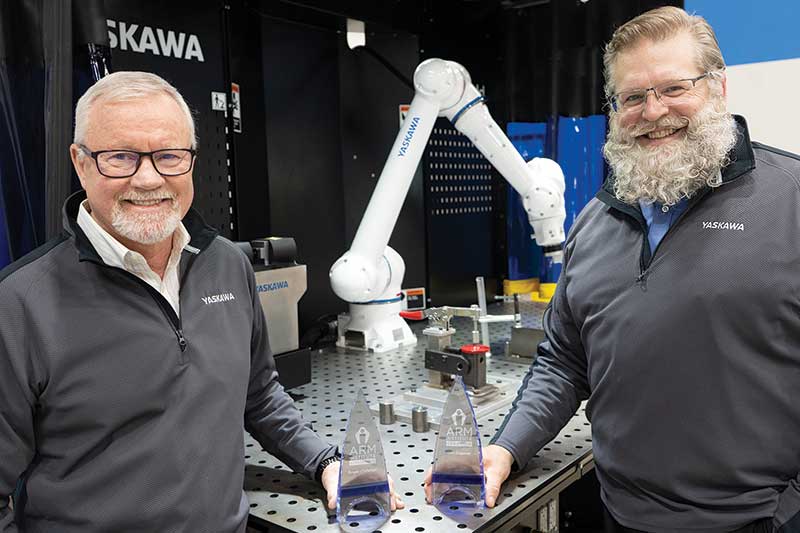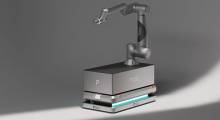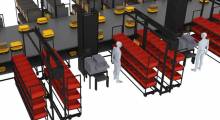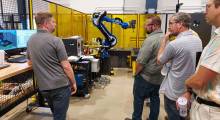This all started with an award. Kind of.
More accurately, the award started with research. More specifically, the research started with a problem. Lots of problems, actually. Just ask Clint Chapman, senior manager of strategic partner relations at Yaskawa Motoman.
For some time now, Chapman, along with Roger Christian, Yaskawa Motoman’s division leader for new business development, have been working what amounts to a side gig to their day jobs.
Quite simply, they have been unfailing supporters of efforts at the ARM (Advanced Robotics for Manufacturing) Institute that make robotics, autonomy and artificial intelligence more accessible to U.S. manufacturers.
Christian was focused on tech research projects alongside academics. Eighteen projects in all.
Each project was brought to a point they call a “tech readiness level,” and then left for other interested parties to develop in whatever way they deemed appropriate. With no strings back to ARM. Could any of them become a commercial entity one day? You bet.
Meanwhile, Chapman was helping to develop roboticscareer.org, a website dedicated to all stages of a robotics career in manufacturing.
In other words, both have been incredibly selfless for a long time. And for their roles, Chapman and Christian recently received the ARM Champion Award. Not bad recognition for their efforts.
As to the aforementioned day job. Both are focused on robotic palletizing/depalletizing systems at Yaskawa. Talk to Christian and Chapman for a while, and the strong parallels between what they have done for ARM and how these systems get developed are clear.
To start, no single company does it all. Just take 3D vision systems, the latest wave of technology in robotic palletize/depalletize systems. Sophisticated vision opens the door to faster cycle times and efficiencies.
But Yaskawa’s 3D vision offering is not as robust as other solutions. That could be an issue, but it’s not. All that’s needed is collaboration with suppliers such as Mujin, Plus One Robotics, Fizyr and more.
Yaskawa’s contribution here, says Christian, is a robust interface that supports the 3D vision components. “It doesn’t matter whether we’re handling bricks or dog food, we’ve got to get the two to work together,” says Christian. And they do, even though the vision and palletizer were not developed in parallel.
Then there’s the matter of the software needed to manage the palletizing/depalletizing sequence item after item. Yaskawa offers a PalletSolver software tool for the robot arm, as well as software development kits.
“What we’ve developed are robust tools for system integrators to use their use-case software direct with our hardware,” says Christian.
By the way, that same sense of collaboration is needed for working with suppliers of end of robot arm tools. If the phrase plug-and-play sounds coy here, it’s not.
“Our efforts at Yaskawa and ARM are all about enabling creativity to solve problems with automation,” says Chapman.
“This is what makes it possible for startups to jump in and come up with solutions that have eluded others. That’s the path forward not just for palletizers/depalletizers but for all of robotics,” Chapman adds.
About the Author
Follow Robotics 24/7 on Linkedin
Article topics
Email Sign Up
















